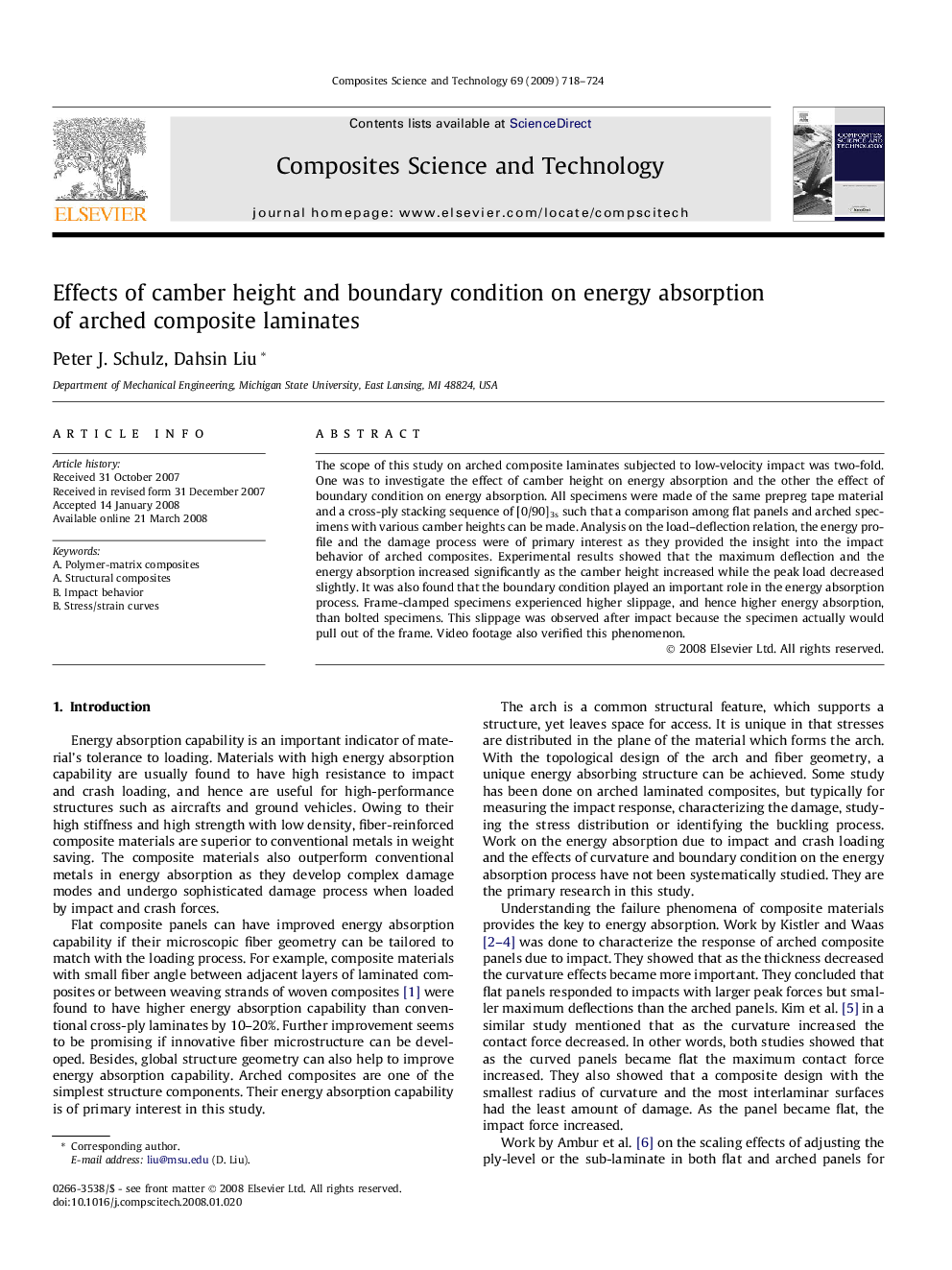| Article ID | Journal | Published Year | Pages | File Type |
|---|---|---|---|---|
| 821442 | Composites Science and Technology | 2009 | 7 Pages |
The scope of this study on arched composite laminates subjected to low-velocity impact was two-fold. One was to investigate the effect of camber height on energy absorption and the other the effect of boundary condition on energy absorption. All specimens were made of the same prepreg tape material and a cross-ply stacking sequence of [0/90]3s such that a comparison among flat panels and arched specimens with various camber heights can be made. Analysis on the load–deflection relation, the energy profile and the damage process were of primary interest as they provided the insight into the impact behavior of arched composites. Experimental results showed that the maximum deflection and the energy absorption increased significantly as the camber height increased while the peak load decreased slightly. It was also found that the boundary condition played an important role in the energy absorption process. Frame-clamped specimens experienced higher slippage, and hence higher energy absorption, than bolted specimens. This slippage was observed after impact because the specimen actually would pull out of the frame. Video footage also verified this phenomenon.
